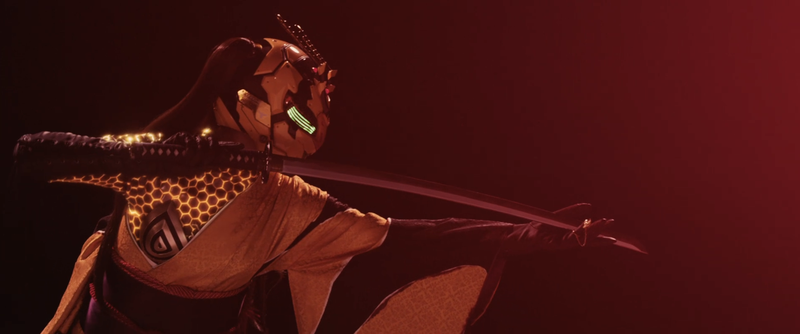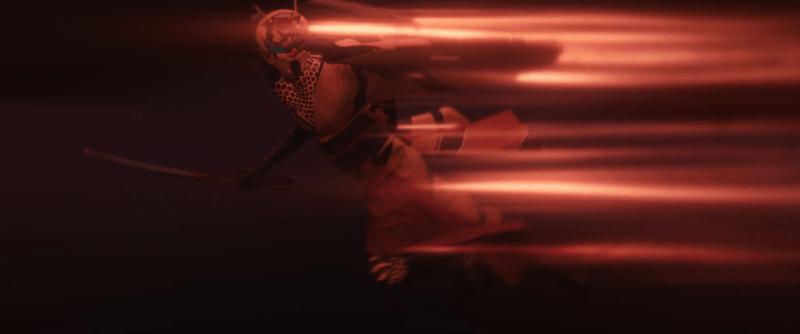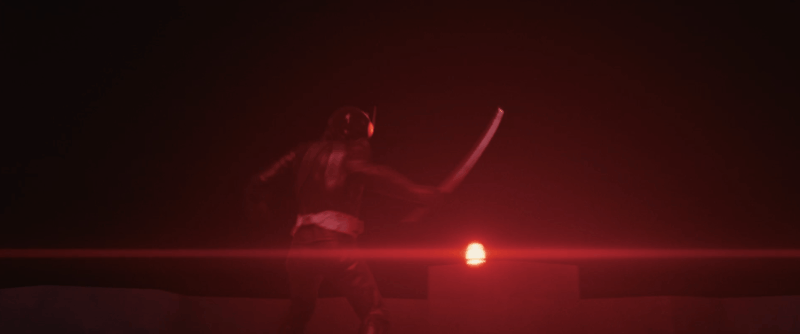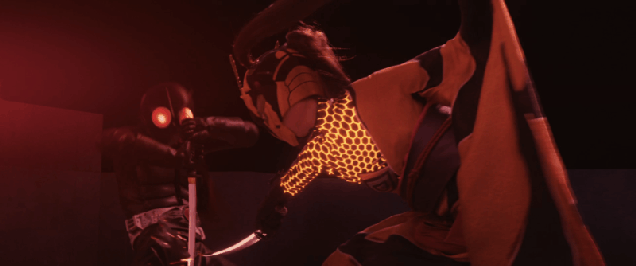Superspeed is a difficult power to portray in superpowered adaptations. There are almost as many ways to portray superhuman agility as there are movies that have attempted it, from dilated time to blurs of vision. And yet, as more and more speedsters race to the big-budget world of the Hollywood blockbuster, none have been rendered so captivatingly like a single scene in Shin Kamen Rider.

Superspeed is not one of the abilities Takeshi Hongo (Sosuke Ikematsu), the young student transformed by the insidious organization SHOCKER into a cybernetic and biologically augmented hero known as Kamen Rider, has. In the world of Shin Kamen Rider, which hit Amazon Prime Video this past weekend, SHOCKER’s elite agents—including ones that go rogue like Hongo and his ally, Ruriko Midorikawa (Minami Hamabe)—have all been transformed into hybrid augmented beings adopting the traits of their cross-species pattern. Hongo’s grasshopper hybrid grants him violently powerful proportionate strength and jumping abilities. Some of the agents he and Ruriko chase down in their quest to bring SHOCKER to justice are similar—the Spider-Aug shoots webs, the Bat-Aug has wings and enhanced hearing. But one augment they face, the Wasp-Aug Hiromi (Nanase Nishino), hones her abilities with superspeed to give Hongo and Ruriko one of the most dazzling fight scenes in the whole movie.

While every Augment in Shin Kamen Rider is presented to us, in the midst of their struggles against each other, as distinctly unnatural and uncannily inhuman, the Wasp-Aug’s movements as she races into a duel with Kamen Rider are unlike anything else presented in the movie. Director Hideaki Anno frames Hiromi’s movements in the perspective of not just the human audience, but the enhanced augments she battles against in Hongo and Ruriko as well. At this point in the movie, well into its second act, we’ve seen Hongo move at rapid speeds, defy gravity, spray someone’s blood in gushing fountains from a single strike: when he’s transformed into Kamen Rider, he is something beyond human capability by magnitudes. And yet Hiromi moves so much faster than what even he is capable of that his confusion becomes Ruriko’s as she watches from outside the fight, and becomes our own as Hiromi blurs and bounds across the screen.
And it’s crucially how she does that that makes the scene, albeit brief, masterful to watch. Shin Kamen Rider doesn’t bring time to a halt to highlight Hiromi’s movement. Nor does it keep itself moving a normal pace either, blurring her entirely. Instead, much like an angry hornet itself, it herks and jerks Hiromi all about the place as she dashes around and at Hongo. One second she’s smooth and gracefully gliding across the ground, the next awkward, jerked motions. She pings about the place going from an indistinct blur of glowing trail lines to a series of framey action shots that feel almost like stop motion. Crucially, all the ways Hongo moves in reaction to her—just to get out of the way, barely to land a hit on her or deflect a blow—are similarly presented, just nowhere near as smoothly, emphasizing how much he can’t keep up.

At times, Hiromi doesn’t look like we’ve been trained a human being should look, even doing superhuman things. The jerkiness of her movements is as unsettling as it is captivating, she moves less like a person and more like a series of still images being rapidly shuffled through a flip book, or panels from a manga. It’s full of stops and starts and impact frames, speeding up and jerking to a halt, the camera overwhelmed as it climaxes in a rapid-fire sequence of cuts between Hongo’s perspective, Hiromi’s perspective, and Ruriko on the sidelines. The scene is short at just around 40 seconds of action, but its unsettling, uncanny appearance is burned into your mind. And that unsettling look, the intentional surreality of it, is key to Shin Kamen Rider’s view of superpowered action, and making itself feel almost wholly unique in the superhero genre.
Shin Kamen Rider doesn’t have the budget of a Hollywood blockbuster film, but its effects work isn’t bad—it’s uncanny, it’s not showy or particularly graceful, but not because of the aforementioned budget. A movie like The Flash or Ant-Man and the Wasp: Quantumania could’ve, and probably did, spend the equivalent of Shin Kamen Rider’s entire budget on single scenes, let alone just VFX work. As the superhero cinemascape has exploded in the west across the last two decades, we’ve come to expect a display of computer-enhanced superpowers that is as slick and as “real” as we can aim for, where any indicator of uncanniness is a weakness to be pointed out and mocked—that for all the billions of dollars and horrifying labor practices, these raw machines of Hollywood capital can’t make Barry Allen not run weird.

Shin Kamen Rider, whether with superspeed or superstrength, or even the application of gravity itself, instead embraces that uncanniness with a strong authorial intent. These heroes and villains are meant to look off-kilter and surreal to us. They’re not human. The very sight of what is ostensibly normal to them should appear jarring and unsettling to us. It shouldn’t feel right. That uncanny feeling isn’t a limitation of what Shin Kamen Rider could afford to present to us, but a key aspect of its world, of its view of superhuman abilities. It’s an effective and yet also haunting dissonance that separates the human from the super. In amplifying that dissonance, it makes for one of the most visually unique live-action superhero aesthetics we’ve seen in a long, long time.
Shin Kamen Rider is streaming now on Prime Video.
Want more io9 news? Check out when to expect the latest Marvel, Star Wars, and Star Trek releases, what’s next for the DC Universe on film and TV, and everything you need to know about the future of Doctor Who.
